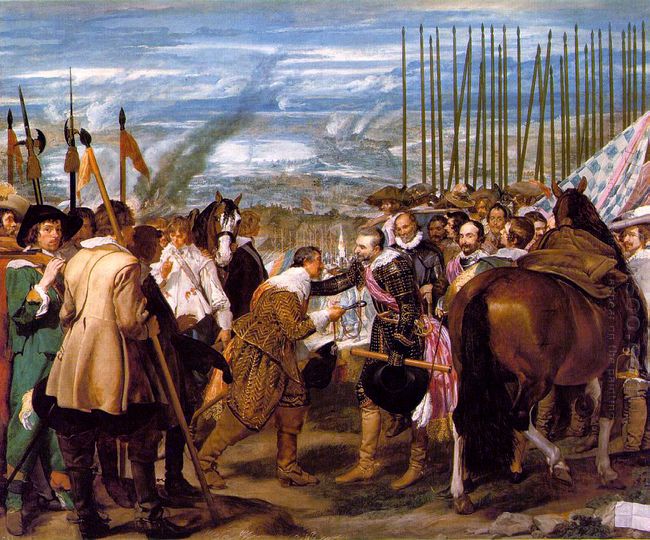The king Phillip ordered the palace painter Diego Velazquez to create the history painting The Surrender of Breda in order to give himself a niche in the temple of frame. This was a real historical event. In 1625, the Spanish forces attacked Holland fortress Breda. Due to the military gap of both sides, the fortress commander Youjinsi Na Sawusiji surrendered to the Spanish army commander Sibinnora and handed over the the key of the fortress city.
This was a battle victory of Spanish troops and neither save its fast fail nor stop the independence of Dutch. The painter was not happy with this task, since it was a shameful aggression which had passed on for 10 years. The Dutch had recaptured the fort and there was no significance for showing. But the king’s court painter had to accept this order of the king. On the other hand, commander Sibinnora was the painter’s friend and patron, so the artist had to draw.
As the true representation, the history painting must comply with the history and the main historical figures must be true. But the painting was an art which should reflect the artist’s political and ideological tendency and artistic ideas. From the painting, we could see the painter is standing in Spain’s position to perform this historical event with humanitarianism. Looking from the painting, a battle had just ended. The background had the open space and floating air, filled with the smoke of war. In the prospect, the both sides reached an agreement to end the war. Obviously the painter was for the winner and created the mighty Spanish sergeant with javelin in dignified neatness. But Holland army was loose and disordered, like a group of motley crew, which formed a strong contrast with the former. Although the Spanish commander Sibinora and the Dutch leader Nasawusiji shook hands, in the image shaping, the winner had the tolerant proud dignity and the loser did not lose the brave and resolute personality. These different images showed the painter’s ideological tendency of standing in the Spanish national position. In the Velazquez painting, the Spanish army soldiers were very strong, but the Dutch army was unconcerned with the battle. The painter did not deface the image of the loser and the Dutch soldiers still had good self-esteem, making the both sides in equal status. The painter intentionally concealed the justice and injustice of war and processed a war of aggression into a war of peace.
